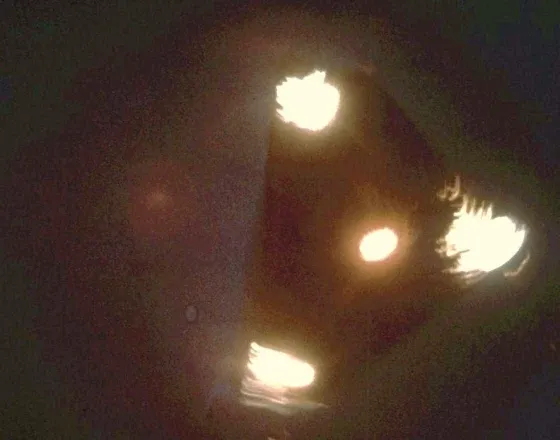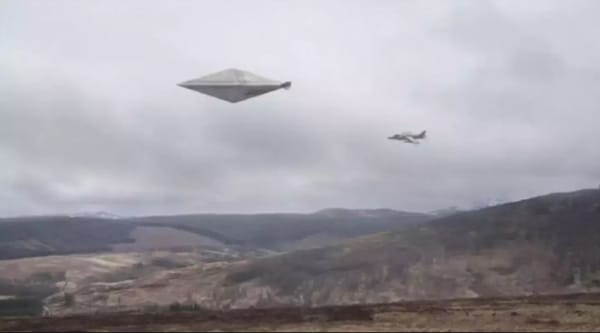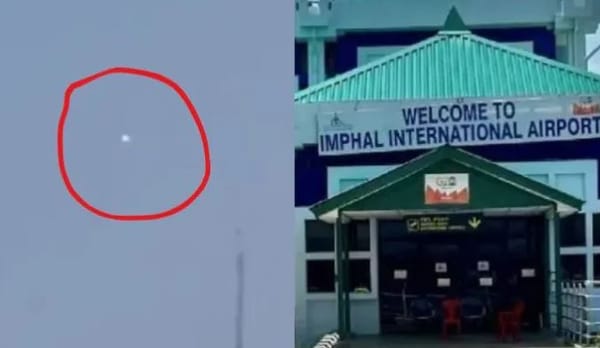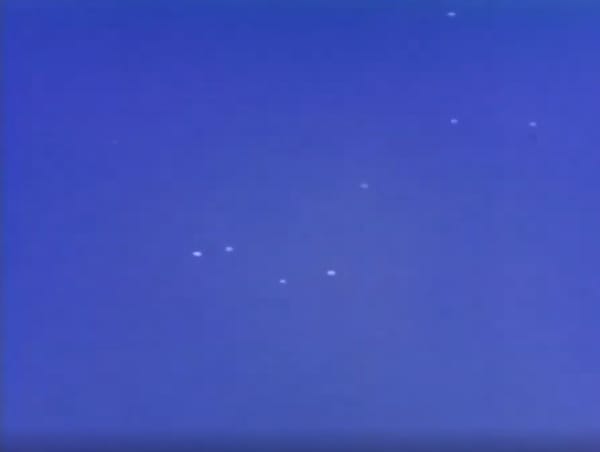The 1989 Belgian UFO Wave

The Belgian UFO Wave, spanning from late November 1989 to April 1990, represents one of the most widely reported and documented series of UFO sightings in modern European history. During this period, numerous reports emerged from across Belgium, describing sightings of large, triangular-shaped objects with distinctive lights. The wave gained significant attention and reached a peak in late March 1990, when radar systems and military aircraft were involved in investigations. Despite substantial public and official interest, the phenomenon remains subject to debate and scrutiny. The series of sightings has been analyzed through various lenses, including potential explanations related to atmospheric phenomena, human perception, and hoaxes. The Belgian UFO Wave remains a focal point in discussions about unexplained aerial phenomena and continues to intrigue researchers and enthusiasts alike.
Incidents
The Belgian UFO Wave, a prominent series of UFO sightings, unfolded between late 1989 and early 1990, capturing public and official attention. This section delves into the detailed incidents that marked this wave, shedding light on the nature and progression of the sightings.
November 29, 1989: The Onset of Sightings
The Belgian UFO Wave began on November 29, 1989, with an initial report from Eupen, a small town in Belgium's German-speaking community. Around 20:30 local time, several witnesses observed a large, triangular object in the night sky. Descriptions from these early reports indicated a craft with three bright lights at each corner and a dimmer light in the center. Witnesses reported the object flying at a low altitude, moving silently and slowly across the sky. The sighting in Eupen was the first of many that would follow in the subsequent months.
December 1989: Escalation and Public Interest
Throughout December 1989, the frequency of sightings increased. Reports came from various locations, including major cities such as Brussels and Antwerp, as well as smaller towns. The consistency in descriptions—triangular shapes with lights—suggested a pattern rather than isolated incidents.
Witnesses from different regions reported similar characteristics of the object: a triangular formation of lights, a low and steady flight path, and a lack of noise. This consistency prompted heightened media coverage and public fascination. The Belgian UFO Wave began to attract attention from UFO enthusiasts, researchers, and skeptics alike.
January 1990: Intensification and Official Response
In January 1990, reports continued to emerge with increasing regularity. On January 5, a sighting near the city of Liège involved multiple witnesses describing a triangular craft with a formation of lights that appeared to hover before moving silently away.
On January 7, a significant event occurred when a sighting was reported by multiple people in the town of Stavelot. Witnesses observed a similar triangular formation of lights and described the craft as having a slight wobbling motion, which some speculated could be indicative of an unconventional propulsion system.
During this period, the Belgian Air Force began monitoring the situation more closely. Increased reports led to an official response, including the review of radar data and other surveillance methods. Despite these efforts, the Air Force did not initially identify any specific threats or anomalous objects in the sky.
March 30–31, 1990: The Peak Incident
The most notable and widely documented incident of the Belgian UFO Wave took place on the night of March 30 to March 31, 1990. This event is considered the climax of the wave:
- Initial Reports and Radar Tracking:
- At approximately 23:00 local time, the Control Reporting Center (CRC) at Glons received reports from witnesses in the vicinity of Thorembais-Gembloux, describing three bright lights moving in a triangular formation. The CRC directed local authorities to investigate.
- As additional reports came in, it became evident that a second triangular formation of lights was also being observed, moving towards the original set of lights.
- Military Engagement:
- Traffic Center Control at Semmerzake picked up a single object on radar and issued orders to scramble two Belgian Air Force F-16s stationed at Beauvechain Air Base. The F-16 pilots were tasked with visual confirmation and interception of the reported object.
- The pilots conducted nine separate interception attempts over the course of the night. They managed to achieve radar locks three times, but these were later found to be locks on each other’s aircraft. The pilots did not visually observe any unusual objects or phenomena, and the radar contacts were eventually attributed to atmospheric effects known as Bragg scattering.
- Ground Observations:
- Around 01:00 on March 31, members of the Wavre gendarmerie, who had been sent to verify initial reports, reported observing four lights arranged in a square formation. These lights exhibited erratic movements before gradually disappearing in different directions.
- Witnesses also described hearing a low engine noise and observed a potential helicopter-like structure with a turbine, although this explanation remained speculative. The low altitude and slow movement of the lights led some to suggest that they could be related to a helicopter or other low-flying aircraft, but no definitive evidence was found.

Subsequent Sightings and Investigations
Following the peak incident in March 1990, reports continued to trickle in, although the frequency diminished. Investigations by various organizations, including the Belgian Air Force, continued to analyze radar data and eyewitness accounts. The wave remained a subject of interest for UFO researchers, skeptics, and the general public, contributing to ongoing discussions about the nature of unidentified aerial phenomena.
The Belgian UFO Wave remains a significant case study in the field of ufology, illustrating the complex interplay between witness testimonies, radar data, and media influence.
Aftermath
The Belgian UFO Wave, which captivated the public and sparked extensive debate, saw several developments in its aftermath. The wave's conclusion did not mark the end of interest or investigation into the events that had unfolded. The following is a detailed account of the aftermath of the Belgian UFO Wave.
Official Reports and Military Investigations
In the wake of the peak incident on March 30–31, 1990, the Belgian Air Force conducted a thorough review of the events. A report was compiled detailing the activities of the night, including the radar data, the interception attempts by the F-16 pilots, and the observations made by ground witnesses. This report concluded that the radar contacts were likely caused by atmospheric interference, specifically Bragg scattering, and did not identify any conclusive evidence of an unknown aerial craft.
The Belgian Air Force’s report was released to the public, but it did not provide definitive answers to all the questions surrounding the sightings. Despite the military's efforts, the phenomenon remained unexplained in many respects, leading to ongoing public interest and speculation.
Investigation by Ufological Organizations
The Société belge d'étude des phénomènes spatiaux (SOBEPS), a prominent Belgian ufological organization, played a significant role during the wave. They collected and analyzed numerous eyewitness reports and photographic evidence. Initially, SOBEPS supported the idea that the wave was a genuine case of unidentified flying objects, and they maintained this stance even as skepticism grew.
However, as the investigation continued, and particularly after the revelation of the hoax photograph by Patrick Maréchal in 2011, SOBEPS faced criticism. The organization was accused of contributing to misinformation and failing to adequately vet the evidence they presented. The image, which had been taken seriously by SOBEPS, was later demonstrated to be a deliberate hoax, undermining some of the credibility of their findings.
Skeptical Analysis and Public Reaction
In the years following the wave, various skeptics and researchers, including those from organizations such as Skeptoid, critically analyzed the evidence. They argued that the sightings were likely the result of a psychosocial phenomenon—a mass delusion fueled by media coverage and public excitement. Critics pointed out that many reports were made after the initial wave of publicity, suggesting that people may have been influenced by media stories to reinterpret ordinary aerial objects as UFOs.
The Belgian UFO Wave was also scrutinized in terms of its alignment with Philip J. Klass’s law on UFO phenomena, which suggests that widespread media coverage can create a self-reinforcing cycle of sightings and reports. Critics noted that the consistent triangular shape and patterns described in the sightings could be attributed to the influence of the initial reports and the widespread media coverage, leading to a sort of collective reinforcement of the UFO narrative.
Academic and Scientific Examination
The Belgian UFO Wave has been the subject of academic research and analysis. Studies have been conducted to explore the psychological and social factors contributing to the phenomenon. Researchers have examined how the media's portrayal of the wave and the influence of public discourse may have shaped individual and collective perceptions of the events.
One notable analysis by Marc Hallet, published in 1992, argued that the wave was largely a result of mass hysteria and media-driven sensationalism. Hallet’s work critiqued the approach taken by UFO organizations and suggested that a more scientific examination of the events was necessary.
Continued Interest and Legacy
Even after the primary wave of sightings had ended, the Belgian UFO Wave continued to capture the interest of both ufologists and the general public. It remains a significant case study in ufology and psychology, often cited in discussions about the influence of media on the perception of unidentified aerial phenomena.
The Belgian UFO Wave has been referenced in numerous publications, documentaries, and discussions about UFO phenomena. It stands as an example of how public interest, media coverage, and psychological factors can intersect to create and sustain a widespread phenomenon, even in the absence of definitive evidence.
The legacy of the Belgian UFO Wave highlights the complexities of investigating UFO sightings and the challenges faced in distinguishing between genuine unidentified objects and phenomena influenced by social and psychological factors.
Conclusion
The Belgian UFO Wave remains a compelling case study in the investigation of unidentified aerial phenomena. Spanning from November 1989 to April 1990, the wave was marked by numerous sightings of triangular-shaped objects and radar anomalies. Despite intense scrutiny and the involvement of military and ufological organizations, the phenomenon was ultimately characterized by a blend of radar interference, mass delusion, and media influence.
The subsequent revelations about hoax photographs and the critical analyses by skeptics underscore the importance of rigorous, scientific examination in such cases. While the wave's exact nature remains debated, it offers valuable insights into how public perception, media coverage, and psychological factors can shape and perpetuate reports of unexplained phenomena. The Belgian UFO Wave continues to be a notable example of how complex and multifaceted investigations into UFO sightings can be, contributing to ongoing discussions in both scientific and ufological communities.



